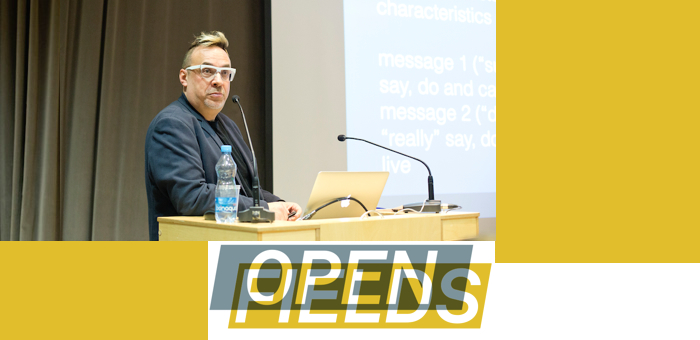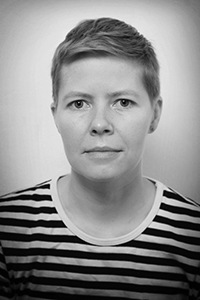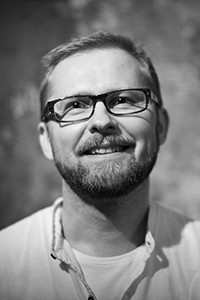Call for Participation: Open Fields Conference and RIXC Festival Exhibition
Call for Open Fields Conference abstracts and Exhibition proposals
DEADLINE Extended: June 20, 2016
 APPLY NOW!
APPLY NOW!
http://festivalconf.rixc.lv
OPEN FIELDS Conference and Exhibition
in the framework of RIXC Art Science Festival 2016
Riga, September 29 – October 1, 2016
Venue:The National Library of Latvia
Open Fields is the title of this year’s international conference taking place in the framework of the annual RIXC Art Science festival in Riga. It brings together international scholars and artists, working at the intersection of arts, humanities and science. Open Fields will focus on artistic research, the changing role of arts, its transformative potential, and relation to the sciences. This call for participation invites contributions and conference paper proposals by scholars, artists, artists-researchers, art and media theorists, data designers and critical engineers, as well as doctoral students, and scientists from different Fields – biology, ecology, environment, digital technologies, renewable energy, etc., who are engaged in experiencing the transformative potential of arts.
For the exhibition and conference, we are looking for research that is located in the contested territory between academic knowledge production and independent creative practices. Open Fields will be investigating the use of data visualizations and other mappings of the contemporary. It will look into areas such as open commons, the future of social interaction, data representation and visualisation, critical design, sustainable infrastructures, eco-aesthetics, techno-ecologies, bio-hacking and other techniques of a transformative potential. No Field is excluded, yet there should always be a connection with art; it is highly likely that art works and conference papers will touch on several Fields, not one. It is such an enhanced understanding of transdisciplinarity that drives this undertaking.
Research Questions: How art and other creative practices can meaningfully contribute to the environmental, technological and scientific challenges of our time? What kind of new knowledge can be created through artistic practice that collaborates with science, technology and other disciplines? And how to deal with contemporary aesthetics, which has undergone dramatic changes during the past decades and keeps changing again as influenced by current post-media situation, data visualization and other contemporary conditions?
The Conference also will feature “Playing Fields” session on contemporary taxonomy, maintaining a connection between the exhibition and the conference. It also will include “Open Fields – Book Review” (PechaKucha) session, providing an opportunity for the speakers to present their new books for other participants and the audience.
* Conference keynote speakers:
Christiane PAUL / New School / Whitney Museum / New York
Jussi PARIKKA / Winchester School of Art / University of Southampton / UK
and others – tbc.
* Exhibition: The Open Fields conference will be complemented by the exhibition taking place in the new Exhibition Hall of the National Library of Latvia. Partly curated, partly peer-reviewed, the Exhibition will represent works by artists, artists-researchers and data designers, who are challenging the notion of art and contemporary aesthetics by moving across, bringing together and converging different knowledge, various media and diverse Fields, as well as using scientific, cultural and social data as new artistic medium, and interpreting them in a new and meaningful ways.
The Exhibition will be open from September 29 – November 6, 2016.
* Proceeding: The papers will be published in conference proceeding, which will come out in the Acoustic Space, peer-reviewed journal & book series. The call for full paper submissions will be announced during the conference.
http://acousticspacejournal.com
Conference Chair: Dr. Rasa SMITE / RIXC / Art Research Lab, Liepaja University, Latvia
Festival and Exhibition curators: Dr. Raitis SMITS, Ainars KAMOLINS, Dr. Rasa SMITE
Playing Fields session will be organized and moderated by Armin MEDOSCH / Austria
DEADLINE FOR CONFERENCE ABSTRACTS:
June 20, 2016
We welcome proposals by scholars, artists, artists-scholars, designers, PhD researchers, curators, media theorists, art historians, science philosophers, cultural innovators, bio-hackers, critical engineers and data designers, as well as scientists from different Fields – biology, ecology, environment, digital technologies, renewable energy, and others, who are engaged in the transformative potential of arts.
Conference themes include:
* investigating contemporaneity, its representation and experience in and through artistic practice and art-science research
* data visualization, and its impact on art, science and contemporary aesthetics
* art and science – challenging new ways of knowledge creation and its representation
* changing weathers – networked responses to geophysical and geopolitical shifts across Europe and the globe
* eco-aesthetics – from sustainable architecture and critical design to techno-ecological art practices
Conference proposal should consist of:
* title and abstract (250 words),
* 5–6 keywords,
* and short author’s biography (160 words).
Please submit your proposals online:
http://festivalconf.rixc.lv
Notifications: June 22, 2016
DEADLINE FOR EXHIBITION PROPOSALS:
June 20, 2016
Partly curated, partly peer-reviewed, the Festival Exhibition welcomes proposals by artists, artists-researchers, artists-engineers, data designers, as well as practice-based doctoral students, who are challenging the notion of art and contemporary aesthetics by moving across, bringing together and converging different knowledge, various media and diverse Fields, as well as by those, who are using scientific, cultural and social data as new artistic medium, interpreting them in a new and meaningful ways.
Artwork submissions should include:
* description of idea and technical requirements (1–2 pages),
* short biography and/or portfolio,
* additional material (photos/video/links/etc.)
Please submit your artwork proposal via e-mail to the address:
rixc (at) rixc.org
Additional material, if the files are larger than 5MB, should be sent via wetransfer.com.
Notifications: June 30, 2016
* About Open Fields Conference
Following the last year’s successful launch of Renewable Futures (renewablefutures.net – the biannual travelling conference series) – this year RIXC with its European partners from Changing Weathers project, and other collaborating institutions and universities from the Baltic Sea region and Europe, are introducing Open Fields, aiming to develop it towards an annual Riga based gathering for the discussion on artistic reseach, the changing role of arts in societies, art’s transformative potential, and relations to sciences.
* The International Conference Scientific Organizational board:
Dr. Lev MANOVICH / Software Studies Initiative / The Graduate Center, City University of New York, US
Dr. Armin MEDOSCH / Faculty of Media and Communications, Singidunum University, Belgrade, Serbia / Initiator of the Technopolitics working group in Vienna, Austria
PhD. Jussi PARIKKA / Winchester School of Art / University of Southampton / UK
PhD. Geoff COX / School of Communication and Culture, Aarhus University, Denmark
Prof. Kristin BERGAUST / Oslo and Akershus University, Norway
Asoc. prof. Laura BELOFF / IT University in Copenhagen, Denmark / Finnish Bioart Society, Helsinki, Finland
Dr. Lily DIAZ-KOMMONEN / Head of Research Department of Media, Aalto University, School of Arts, Design and Architecture, Helsinki, Finland
Dr. Ursula Damm / Bauhaus University Weimar, Germany – tbc.
Dr. Andris TEIKMANIS / Vice-rector, the Art Academy of Latvia, Riga
Dr. Vytautas MICHELKEVICIUS / Nida Art Colony, Vilnius Academy of Arts, Lithuania
PhD. Margrét Elísabet Ólafsdóttir / Art Education at the University of Akureyri, Iceland
Andrew Gryf PATERSON / Pixelache Helsinki / SERDE / Aalto University ARTS Media department, Helsinki, Finland
Regine DEBATTY / we-make-money-not-art.com, London, UK – tbc.
Dr. Piibe PIIRMA / Estonian Academy of Arts, Tallinn, Estonia
Dr. Janis KLEPERIS / Hydrogen Laboratory, Solid State Physics Institute, Latvian University, Riga, Latvia
and others – tbc.
* The venue of the conference and exhibition: the new building of the National Library of Latvia (http://www.lnb.lv/en/about-library/nll-building).
* Organizer: RIXC Center for New Media Culture.
* Partners: Conference and Exhibition is organized by RIXC in collaboration with the Art Research Lab of Liepaja University, the Art Academy of Latvia and Changing Weathers – Creative Europe’s project partners (http://www.changingweathers.net/)
* Exhibition partner: the National Library of Latvia
* Contact: rixc (at) rixc.org,
Address: RIXC, Maskavas iela 4, Riga, LV-1050, Latvia
Phone: +371 67228478 (office), +371 26546776 (Rasa Smite)
* Support: EU Program Creative Europe, the State Culture Capital Foundation of Latvia, Riga City Council, the Ministry of Culture of the Republic of Latvia, and others.






